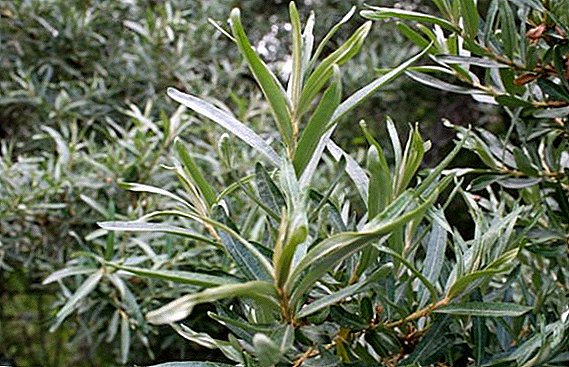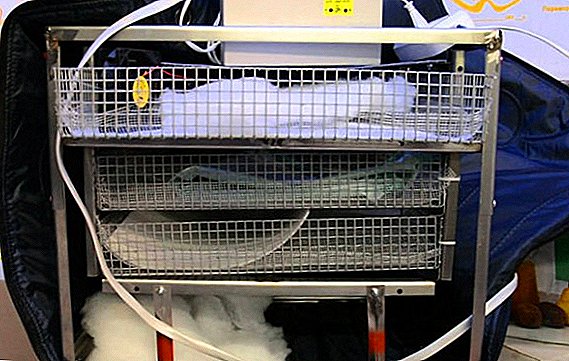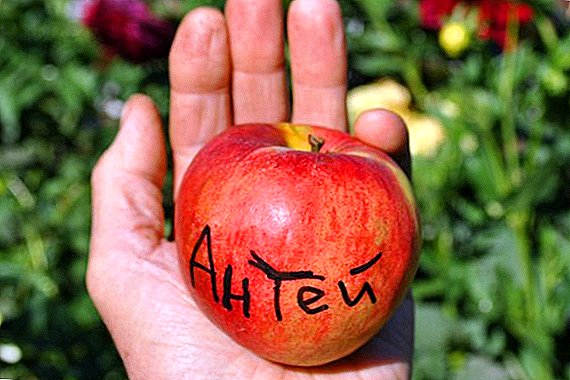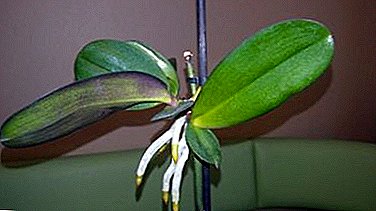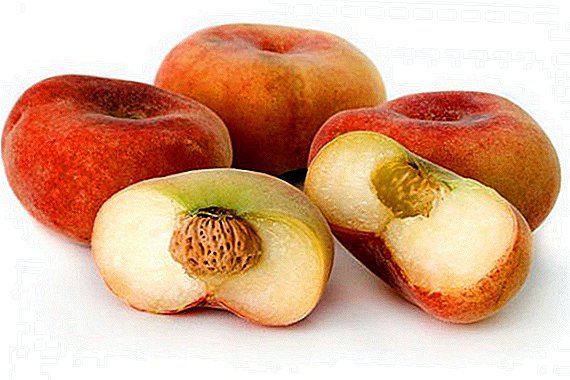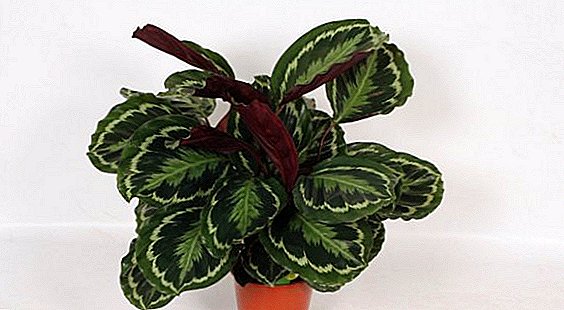 Today, modern designers offer calathea as one of the main elements in a modern apartment. Such a beautiful and unusual flower will be the main detail of the decor in the house. How to grow it and what kind of care it needs will be discussed in detail in the article.
Today, modern designers offer calathea as one of the main elements in a modern apartment. Such a beautiful and unusual flower will be the main detail of the decor in the house. How to grow it and what kind of care it needs will be discussed in detail in the article.
Plant description
Flower growers who manage to grow calathea have the right to be proud: the flower is really beautiful and unusual. Its leaves - this is the whole palette of green, at least - brown. His homeland - the tropics of South America, although it grows in Africa. The existing one and a half hundred species of Calathea make it possible to choose one or another of its species. But all the leaves will be oval and wide, especially at the bottom, with pink veins-lines, creating a unique pattern.
Did you know? The foliage of the flower has a supersensitivity to light: in the morning, as if waking up, the leaves fall, demonstrating their whimsical pattern. And by the night they rise upwards, they become like arms raised to the sky. For this, calathea is also called a prayer flower.
In such a raised position, the lower part of the leaves is visible, also unusual or unlike many flowers. Among the variety of types of Calathea, there is a particular favorite — Calathea medallion. And although it is not easy to grow such a flower, experienced flower growers succeed. And beginners can try if they know how to do it. And wait for the flowering of calathea - it usually happens in spring or summer to see small orange, yellow or white tender blotches-flowers. 
Conditions for successful home cultivation
In order to grow a calathea medallion at home, and this is one of the most popular types, a lot of effort must be made. But on the other hand, the result will definitely please: roseopikta (another name for Calathea) both during flowering and after it will be a highlight among all the other colors.
Location and lighting
Even before the “arrival” in the house of Calathea, it is necessary to determine the place where the flower will live. If this is a traditional window sill, then the window should face east or west. There is no possibility to place the calathea on the windowsill, the alternative is a stand or a shelf next to the window. But that the flower was enough diffused light.
Important! There must be a diffused light, because Calatea can cause burns from direct sunlight.
Do not like the flower and the lack of light, twilight: streaks that create a pattern on the leaves, fade, the flower lags in growth. Especially carefully you should treat the flower, if there is no other place than the window facing the south side: then you need to darken it. 
Temperature conditions
Although Roseopikta is a tropical flower, it is wary of heat and heat: it needs moderate temperature conditions. And without sudden drops. And in winter, drafts are contraindicated in flower, as, however, at any time of the year. The optimum temperature at which in winter the calatée medallion is safe is + 16 ... + 23 ° С, and in summer it can be higher - + 18 ... + 25 ° С.
Air humidity
As for humidity, here Calathea confirms its tropical origin, it needs air that is always saturated with moisture: 90% is an excellent indicator for a flower. If the humidity is much lower, then calathea sheds leaves. And then the grower should think: there is no possibility to provide the flower with sufficient moisture - it is not necessary to plant it. Instead, you need to look for another decorative, less demanding of moisture.
Familiarize yourself with the variety of indoor Kalat.
The same orchid, for example. Alternatively, you can purchase a florarium specially for Calathea (you can use an aquarium), where you can create conditions acceptable for roseopic plants. There is another way: 4-5 times a week to spray a flower using a spray bottle, and carefully monitor that there are no puddles on the leaves. And some flower growers have adapted the smooth leaves of a calathe wipe with a sponge moistened with water, doing this carefully and not only on velvety leaves - it is still better to moisten them with a spray of water. 
Peculiarities of home care
Care must be started with water. The quality of the one in the water supply does not suit the flower. Ideally, rain is needed, as well as filtered. Only her temperature should be slightly above room temperature.
Did you know? One of the rarest flowers is Calathea Varshevich, which by its appearance resembles a white rose.
Irrigation rates
In the spring and summer, the calathea must be watered every other day, in the fall and winter it is enough once a week. It should be watered, not poured: the water should not stagnate in the pot or in the pan. It must be drained.
Top dressing
For feeding, calatheas use liquid fertilizers - their range today is quite wide: "Bona Forte", "Pokon", "Agricola Aqua", "Etisso". The main thing is that such fertilizers are for decorative leafy plants, as the manufacturer writes on the package.
On the packaging, detailed instructions are also given, which must be strictly followed - overfeeding for calathea is just as harmful as the lack of top dressing. With regard to the frequency of feeding, in spring and summer will be enough from 2 to 3 times a month. 
Pruning
The flower does not need pruning. When the leaves die off below, “signaling” about this change by changing the color to yellow, they should be removed. No devices are necessary: gently tear off a sick leaf with your hands, trying not to damage the plant. This preserves the decorative appearance of the calathea. If the leaves are badly damaged, then they are treated the same way - they are removed. This procedure does not depend on the time of year.
Transfer
Calathea deteriorates the soil during growth. If it is grown for a long time in the same pot, the flower will wither. And then no feeding will help. The best way to extend the life of Calathea in all its glory - transplant. It is produced every spring until the flower is young. Adult, after 4 years, Calathea needs a transplant in 2-3 years. To prepare for it should be with the choice of the pot: it should not be many times larger than the previous "house" of Calathea, just a little wider.
Important! When transplanting, one nuance should be taken into account: in order to avoid planting water in the growth process, pieces of pine bark, crushed charcoal, peat moss should be added to the soil. They have a double function - fertilizer and baking powder.
It should be filled with slightly acid loose soil, so that the plant can breathe comfortably. Suitable substrate can be purchased at a specialty store, it can be a mixture for azaleas or rhododendrons. If you prepare the soil at home, you will need humus, peat, leaf earth. And all this in equal amounts. The mixture is thoroughly mixed by adding 0.5 parts of sand.  The transplant procedure follows this system: at the bottom of the pot is poured on 5-7 cm of expanded clay, which plays the role of drainage. Above - a layer of the prepared substrate. The flower is carefully removed from the old pot and, together with a clod, the soil is transferred, or rather, transferred to a new habitat. The main thing here is not to damage the roots so that the plant does not get sick. A fresh substrate is poured into the resulting void. Trampling is not necessary, just enough to embrace it.
The transplant procedure follows this system: at the bottom of the pot is poured on 5-7 cm of expanded clay, which plays the role of drainage. Above - a layer of the prepared substrate. The flower is carefully removed from the old pot and, together with a clod, the soil is transferred, or rather, transferred to a new habitat. The main thing here is not to damage the roots so that the plant does not get sick. A fresh substrate is poured into the resulting void. Trampling is not necessary, just enough to embrace it.
Breeding
The grower can independently determine which method of reproduction to use: by seeds, cuttings or dividing a bush, which is still the most optimal and suitable.
Dividing bush
It is believed that the simplest way - the division of the bush. It is convenient to do it during the transplant Calathe. To do this, it is necessary to prepare small pots and plant separate parts of the rhizome in them. And be sure to monitor the temperature: the seedlings need warmth, but not heat, so the temperature should be within + 22 ... + 24 ° С.
In the sun, the calathea does not need to be exposed, as in a dark place, you just need to put it where there will be shading. As for feeding, you can do without it after transplantation. 
Cuttings
The cutting is performed as follows:
- Cut off the aerial part, but with preservation of growth points both on the maternal calatee and on the handle.
- The cut stalk is planted in moist soil and covered with a film so that it takes root.
- When the roots appear, and this in 2-3 weeks, the film is removed.
A similar method is leaf transfer. At the same time cut the sheet and transplanted into the pot, which is already prepared soil mixture. The plant is watered and sent to a warm place. Further care of him is the same, according to an acceptable scheme for Calathea.
Find out what flowers can not grow at home.
Seeds
The most unpopular method of breeding a calathea at home is by seed. But breeders are willing to use it: so you can get a new variety of roseopikta or a new hybrid. If an amateur grower has an interest in this, and the collected seeds are healthy and ready for germination, you can try. You will need a container with a mixture of sand and leafy ground, into which the seeds will "go", and the soil should be slightly moist, and you also need a film or glass to create the greenhouse effect.  Then you will have to be patient and wait for the seedlings to ascend. After that, they can be freed from the film, and seed reproduction is completed by the appearance of the first true leaf: this is a signal that the plant can be planted in a separate pot.
Then you will have to be patient and wait for the seedlings to ascend. After that, they can be freed from the film, and seed reproduction is completed by the appearance of the first true leaf: this is a signal that the plant can be planted in a separate pot.
Difficulties in growing
If you observe the conditions of the maintenance of the kalatei medallion, which have already been mentioned at the beginning, everything will turn out. The main thing - do not forget that this plant is capricious, and will show all its beauty in response to proper care. But there are also pests from which Kalathea cannot always be insured:
- thrips. These insects have managed to spread throughout the planet and are actively harming crops and houseplants. At Calathea, thrips appear and occupy it, if, where the flower grows, the temperature is high and the humidity is low. Then the thrips capture the lower sides of the sheets, appearing from above with light dots. Soon these dots change color to brown, the leaves darken and dry out. Special insecticides will help to cope with thrips. You can wipe the leaves and soapy water. And to complete both that, and other medical procedure is necessary top dressing which is added in a week;
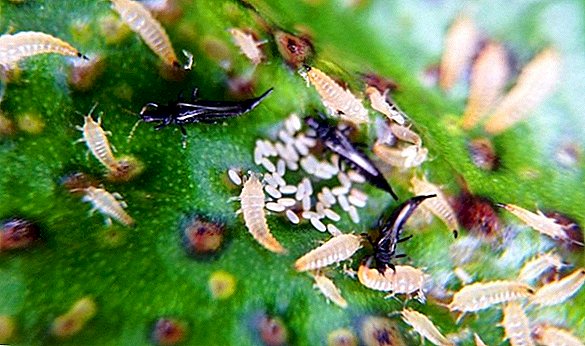
- black mushroom. It is a black film that appears on the leaves and shoots of the calathea. The film interferes with breathing and photosynthesis, i.e., condemns the flower to death. Here washing with soap solution will help;
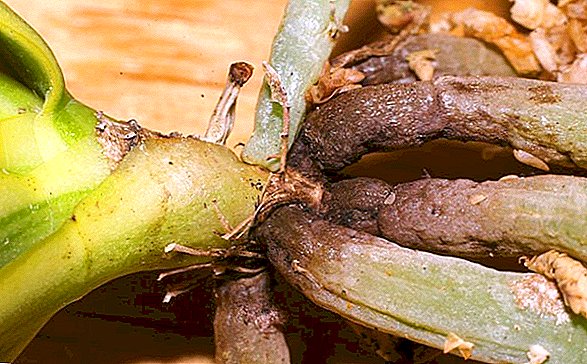
- scythe. They also love to suck the juice from the leaves of Calathea. It looks like small, brown insects occupying the leaf surface. Because of them, the leaves lose their color, become brown, dry and fall. And for shitovki also insecticides serve as an antidote. Help and washing the leaves and stems with soapy water.
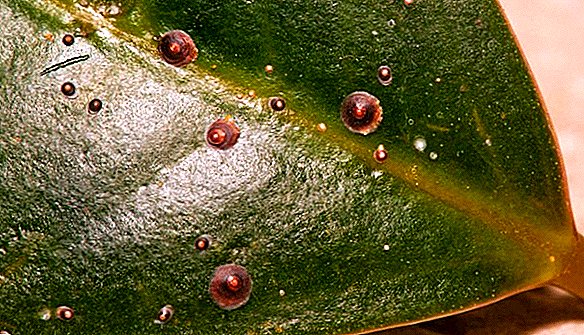
Check out the requirements for the care of Calathea.
It is necessary to remember and exclude:
- too humid air;
- drafts;
- direct sunlight;
- lack of watering.







